How to Make Almost* Anything | MAS.863
Ella Peinovich | M.Arch Level III, MIT
Ella Peinovich | M.Arch Level III, MIT
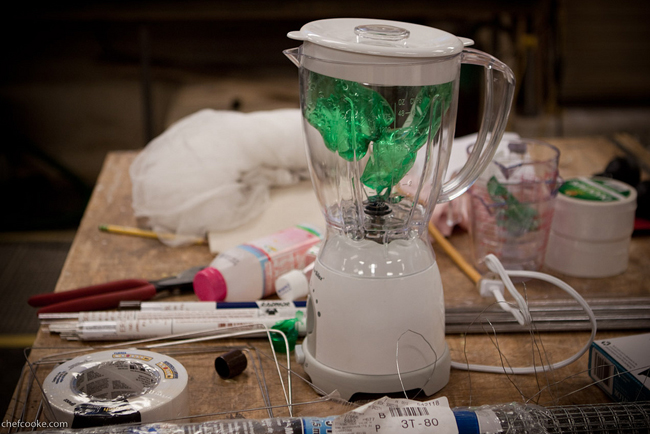
Casting ferrocement composites
As a follow-up to the mold construction for Sanergy in Kenya over the summer, I have been doing independent research to develop ways of reducing the weight and in turn the cost of the current construction. This week for the composites assignment, I was inspired to develop a fabric mesh alternative to the chicken wire structural inlay most commonly used.

I first looked at the canvas, and decided that a more pourous fabric would be more appropriate, in order to achieve an effective laminate. The stretch cotton while pourous enough appreared to have too high a tolerance, when in application in the unit the wall would fail long before the stretch fabric could provide any resistance.

I finally decided on using a pourous diagonally woven polyester mesh sourced at REI, aka mosquito net, in 4 distributed layers throughout the 1.5 inch concrete cast. The source of this idea came from choosing a locally available material to Kenya, that by using in our construction we could support local companies manufacturing mosquito nets.
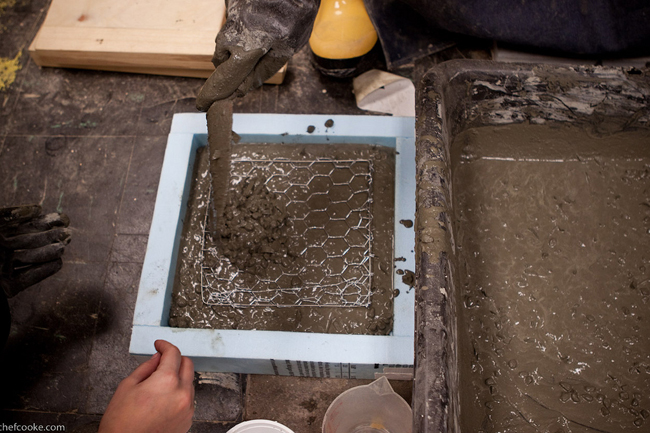
Typical ferrocement composite using chicken wire inlay with rebar ring to hold chickenwire flat.
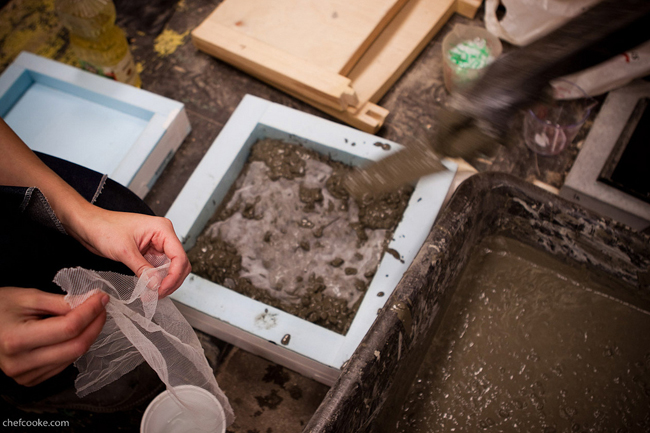
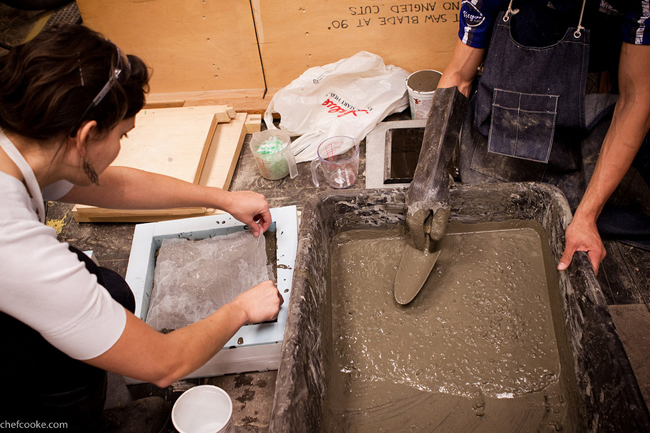
Laying in 4 layers of distributed mosquito net mesh woven from strong polyester multi-filament fibers.
My hypothesis is that the layers of mesh net will perform just as well (if not better because of wider ditribution) as the chicken wire mesh to prevent cracking during curing and against catastrophic failure of the assembled structure if damaged, but that the rebar used to reinforce the chicken wire may provide more overall structural stability, neccessary for the full unit. Future tests will look into pretensioning the mesh for maximum rigidity and lacing an elastic band to the mesh to attach to a rigid frame.
The cement mix is meant to closely resemble the mix used in Kenya over the summer; including Type 1 Portland cement, "wash dust" (decidedly equivalent to pea gravel), "river sand" (or unfiltered playground sand), 1/2" gravel, plasticizer, pozzolanic extenders, and fibers.
Thus... demolding will happen after 1 week and testing of the stated structural hypothesis will need to wait for 21 days. I will keep you posted.
.
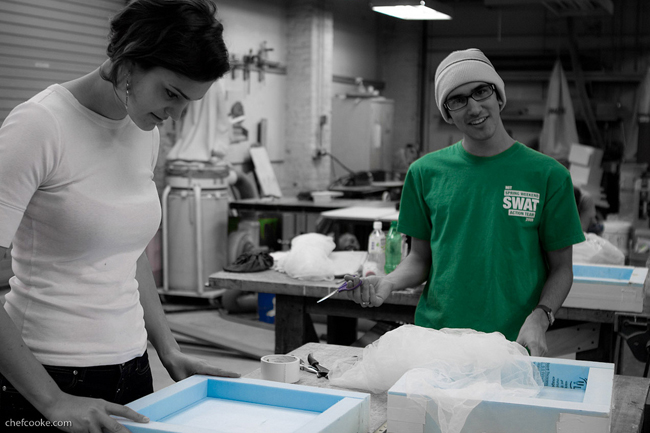
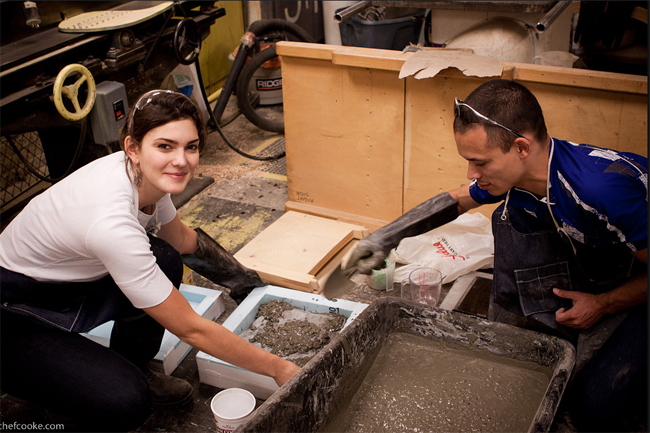
Special acknowledgments | This week I recruited help in casting and documentation for these and other tests (including aerated concrete and using recycled aggregate) from fellow Sanergy teammate Benji Moncivaiz and Nate Cooke.